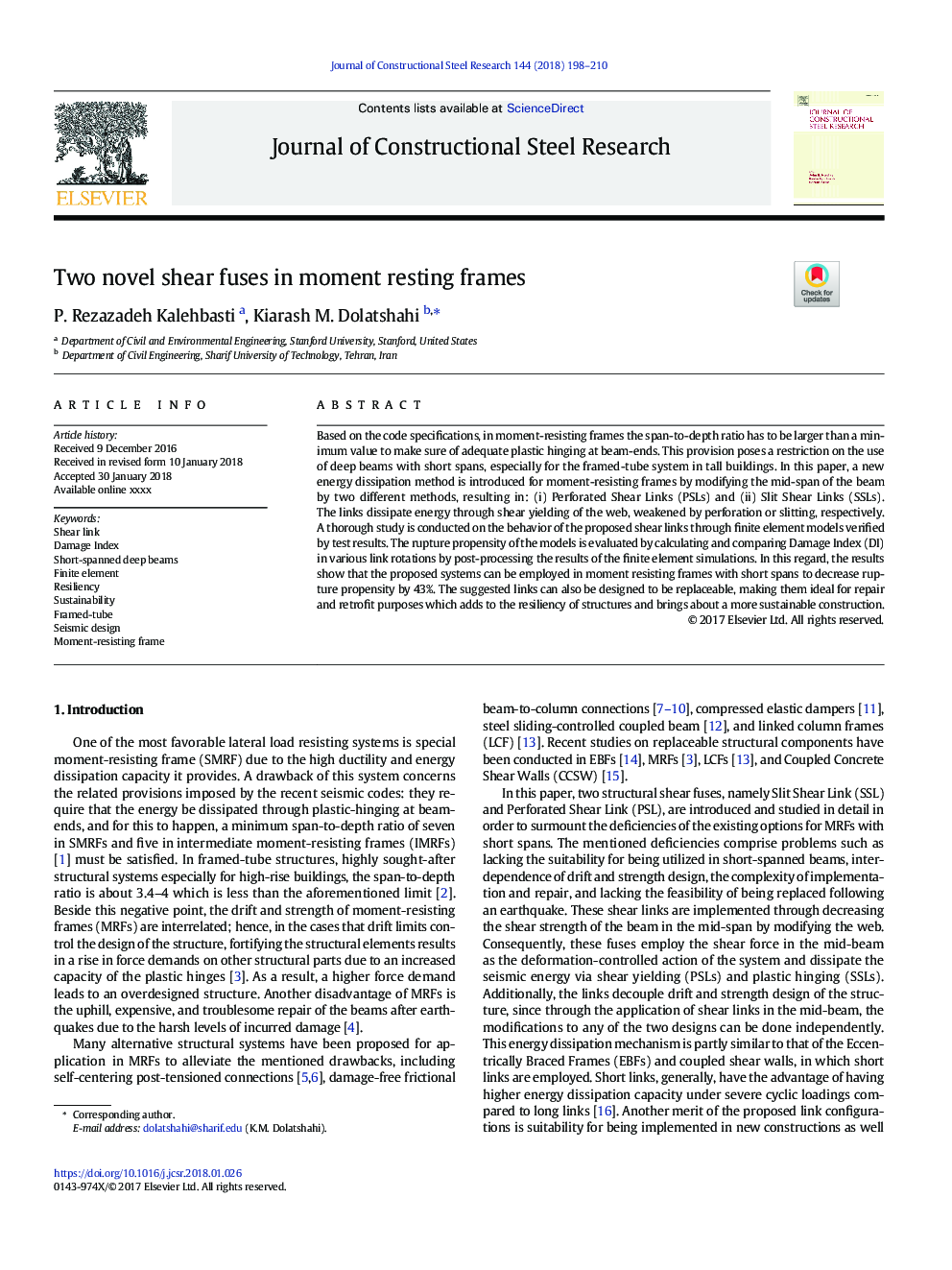| Article ID | Journal | Published Year | Pages | File Type |
|---|---|---|---|---|
| 6750883 | Journal of Constructional Steel Research | 2018 | 13 Pages |
Abstract
Based on the code specifications, in moment-resisting frames the span-to-depth ratio has to be larger than a minimum value to make sure of adequate plastic hinging at beam-ends. This provision poses a restriction on the use of deep beams with short spans, especially for the framed-tube system in tall buildings. In this paper, a new energy dissipation method is introduced for moment-resisting frames by modifying the mid-span of the beam by two different methods, resulting in: (i) Perforated Shear Links (PSLs) and (ii) Slit Shear Links (SSLs). The links dissipate energy through shear yielding of the web, weakened by perforation or slitting, respectively. A thorough study is conducted on the behavior of the proposed shear links through finite element models verified by test results. The rupture propensity of the models is evaluated by calculating and comparing Damage Index (DI) in various link rotations by post-processing the results of the finite element simulations. In this regard, the results show that the proposed systems can be employed in moment resisting frames with short spans to decrease rupture propensity by 43%. The suggested links can also be designed to be replaceable, making them ideal for repair and retrofit purposes which adds to the resiliency of structures and brings about a more sustainable construction.
Related Topics
Physical Sciences and Engineering
Engineering
Civil and Structural Engineering
Authors
P. Rezazadeh Kalehbasti, Kiarash M. Dolatshahi,
